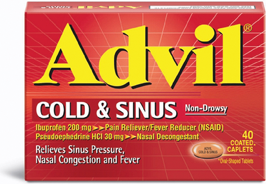I see tons of patients who are having problems with their nose and sinuses. And I see a lot of patients who think there is something wrong with their sinuses but in fact have something different going on.
“Sinus headache” is one of the most common complaints that ENT doctors and primary care doctors hear.
The term “sinus headache” was actually invented in a large part by pharmaceutical companies to sell special “cold and sinus” medications. These products usually contain a combination of drugs that treat true sinus pain but also alleviate other causes of headache and facial pain that can be confused with sinus infections.
True sinus infections commonly cause pain and pressure in the face (usually above, below, and around the eyes), congestion, thick nasal drainage, and loss of smell or lowered sense of smell. Less common symptoms are headache, ear pressure, cough, and bad breath.
There are many other reasons for headaches and facial pain. The most common is migraine headache. Migraines are very common, especially in younger women, and commonly cause headaches and facial pain which overlap with the sinuses and fool many patients into thinking they have recurrent sinus infections.
Migraines most often cause pain on one side of the face and head and typically cause the same headache each time. For example, someone would always have pain on the left side behind the eye. The headaches would not change location each time. Migraines can sometimes trigger nasal congestion and runny nose as well, which further complicates the picture.
Tension headache is another common mimic of sinus problems. This type of headache is caused by tension in the muscles of the face and scalp and is common at the end of a stressful day or after a period of strong concentration or focus. The usual location of a tension headache is in the forehead and temples and over the top of the scalp.
There are other less common types of headaches including neuropathic pain (which is pain caused by abnormal nerve signals).
The best way to determine if you are truly having a sinus headache or something else like a migraine headache is to see an ENT doctor. I take a careful history from every sinus patient that helps me to find the correct diagnosis. In addition, ENT doctors like myself can use a special endoscope in the office to directly view the inside of the nose and look for signs of sinus infection. Finally, radiologic tests, especially CT scans, can be used to see inside the sinuses and look for infection and inflammation.
